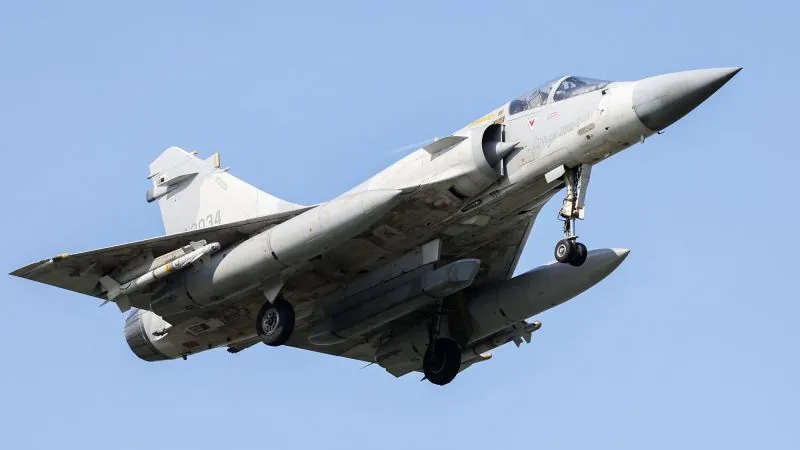
Record Surge of Chinese Warplanes Raises Tensions Around Taiwan Amid Military Drills
2024-10-15
Author: Jessica Wong
In a dramatic escalation of military tensions, China has deployed a staggering number of warplanes in close proximity to Taiwan during extensive military exercises that took place on Monday. The island's Defense Ministry reported that this operation marked a record high, with an astonishing 153 Chinese aircraft detected in a 25-hour timeframe.
The military drills involved a multifaceted display of might including fighter jets, drones, warships, and Coast Guard vessels simulating a blockade of Taiwan, which Beijing views as a breakaway province. Taiwan's government condemned these activities as an "unreasonable provocation" amid ongoing concerns over China's increasing military assertiveness in the region.
Notably, among the 153 Chinese aircraft, 111 breached the Median Line, an informal boundary in the Taiwan Strait that Beijing has increasingly disregarded in recent years. While these incursions did not escalate into violations of Taiwan's sovereign airspace—which extends 12 nautical miles from its coast—the consistent presence of Chinese forces in Taiwan's Air Defense Identification Zone (ADIZ) signals a troubling trend that could inexorably lead to higher stakes in future confrontations.
This surge in military activity outstripped previous records, surpassing the earlier high of 103 Chinese warplanes detected in September 2023. In response, Taiwan mobilized its defense systems, deploying its own aircraft and naval assets to monitor the maneuvers closely.
China framed its actions as necessary military exercises aimed at delivering a “stern warning” to pro-independence factions in Taiwan, coming directly on the heels of remarks made by Taiwan's newly inaugurated President, Lai Ching-te. In a defiant National Day address, Lai asserted Taiwan's sovereignty, insisting, “Taiwan is not subordinate to China,” and emphasized that Beijing has no authority to represent the island on the world stage.
The frequency of such drills has increased significantly over the past few years, often coinciding with moments deemed provocative by the Chinese government. These military exercises serve dual purposes: they test Taiwan's military response capabilities while exerting pressure on the island's defense resources.
The People’s Liberation Army characterized these maneuvers as a collaborative initiative involving various military branches, affirming their strategic intensity by encircling Taiwan in the Taiwan Strait and in adjacent waters. A map provided by the Eastern Theater Command illustrated operational zones in nine areas surrounding the island.
Taiwan's Defense Ministry further reported that during the same 25-hour period, 14 Chinese warships were tracked near its waters, including the aircraft carrier Liaoning. Despite this aggressive show of force, no Chinese naval vessels entered Taiwan's contiguous zone—defined as extending 24 nautical miles from Taiwan’s shoreline—which could signal an alarming escalation in military aggression.
Experts indicate that the rising proximity of military drills poses significant risks, reducing the response time of Taiwan’s defense forces in the event of actual conflict. These developments highlight the precarious nature of peace and stability in the Taiwan Strait.
As the Joint Sword 2024-B exercises commenced at 5 a.m. local time and concluded successfully by 6 p.m., the drumbeats of potential conflict resonate louder than ever, leaving many to ponder the implications of heightened militarization in the region. The ongoing situation continues to demand vigilance, with global repercussions if tensions escalate further.
Will these aggressive maneuvers lead to an inevitable confrontation? Only time will tell as the eyes of the world remain fixed on the dynamic interplay between Taiwan and China.

 Brasil (PT)
Brasil (PT)
 Canada (EN)
Canada (EN)
 Chile (ES)
Chile (ES)
 España (ES)
España (ES)
 France (FR)
France (FR)
 Hong Kong (EN)
Hong Kong (EN)
 Italia (IT)
Italia (IT)
 日本 (JA)
日本 (JA)
 Magyarország (HU)
Magyarország (HU)
 Norge (NO)
Norge (NO)
 Polska (PL)
Polska (PL)
 Schweiz (DE)
Schweiz (DE)
 Singapore (EN)
Singapore (EN)
 Sverige (SV)
Sverige (SV)
 Suomi (FI)
Suomi (FI)
 Türkiye (TR)
Türkiye (TR)